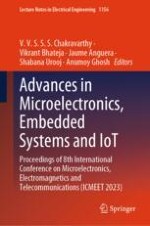The book discusses the latest developments and outlines future trends in the fields of microelectronics, electromagnetics, and telecommunication. It contains original research works presented at the International Conference on Microelectronics, Electromagnetics and Telecommunication (ICMEET 2023), organized by Department of Electronics and Communication Engineering, National Institute of Technology Mizoram, India, during 6–7 October 2023. The book is divided into two volumes, and it covers papers written by scientists, research scholars, and practitioners from leading universities, engineering colleges, and R&D institutes from all over the world and shares the latest breakthroughs in and promising solutions to the most important issues facing today’s society.
